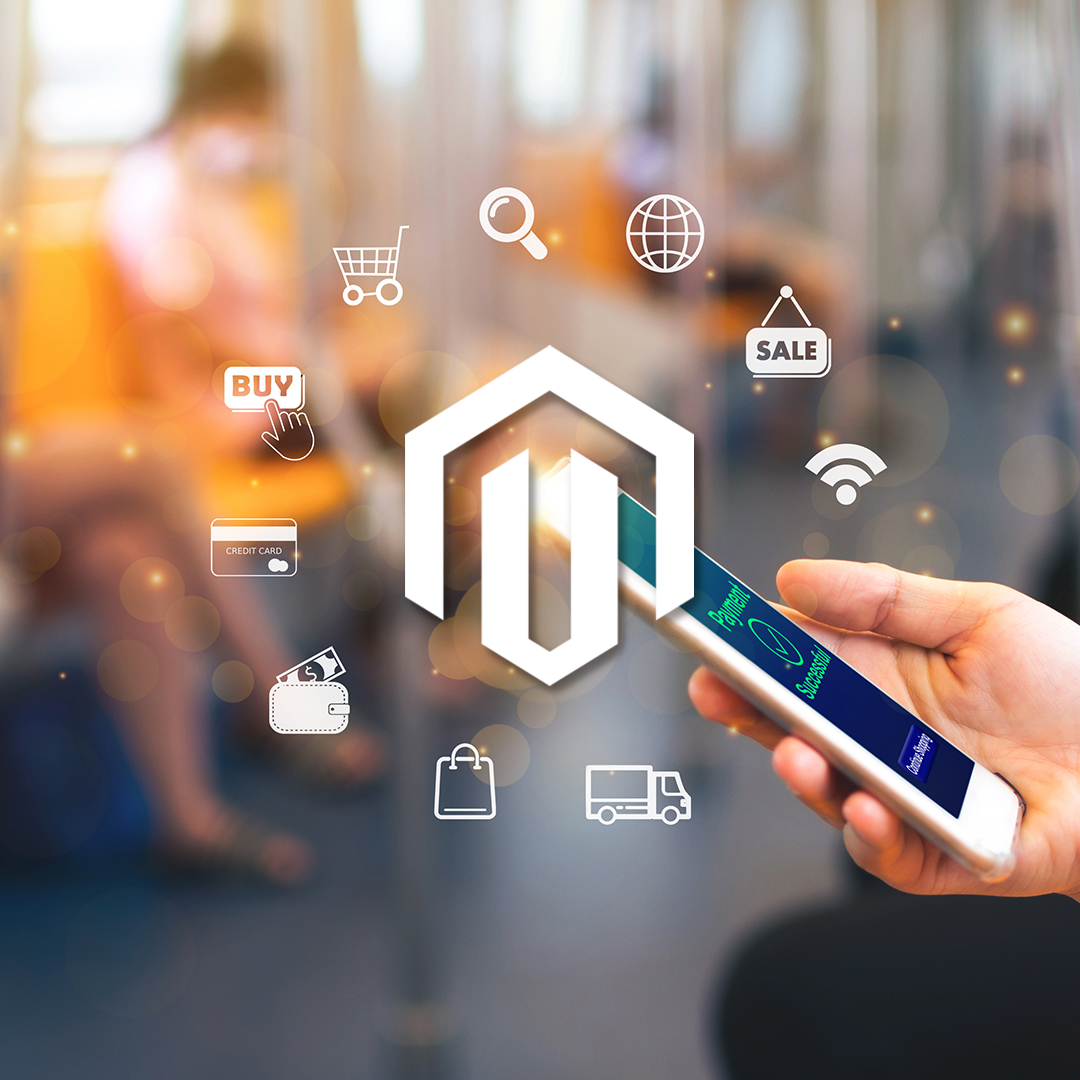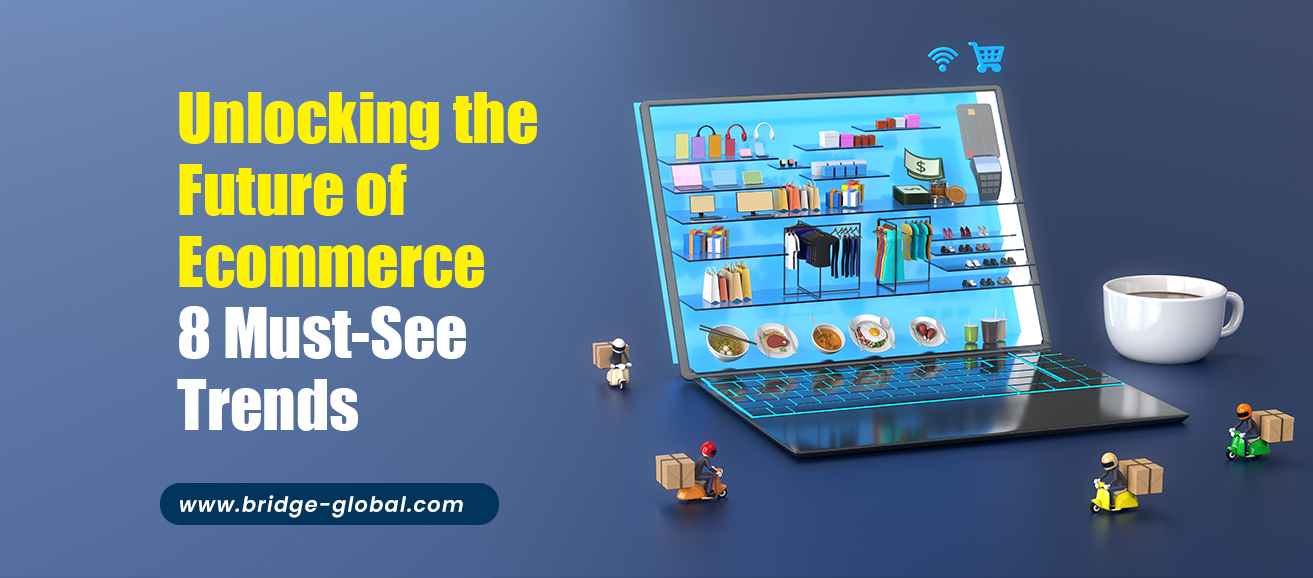The Next Big Thing in Ecommerce – 8 Unmissable Trends
Ecommerce has been a dynamic and ever-evolving realm, shaping the way we shop and do business. As we stand at the crossroads of technology and consumer behavior, it's evident that the next big wave of transformation is upon us.
In this blog, we delve into the exciting developments and trends that are redefining the ecommerce landscape. From cutting-edge technologies to innovative strategies, we're about to uncover what makes the future of e-commerce the next big thing.
Software development companies play a crucial role in the evolving landscape of ecommerce. They design and build the digital infrastructure that underpins online stores, from user-friendly websites and mobile apps to secure payment gateways and efficient inventory management systems. These companies also empower e-commerce businesses with cutting-edge solutions, ensuring they can keep pace with evolving consumer demands and industry trends. From enhancing user experiences to optimizing supply chain processes, software development firms enable ecommerce enterprises to thrive in a competitive digital marketplace.
Whether you're a seasoned ecommerce business entrepreneur or just dipping your toes into the digital marketplace, there's something in store for everyone as we explore the horizon of possibilities. Join us on this journey to witness the fascinating evolution of ecommerce, where the future is not only promising but also incredibly intriguing.
Top 8 Trends That Shape the Future of Ecommerce Business
The future of ecommerce business is being shaped by a dynamic landscape of trends. From the rapid growth of mobile commerce and the influence of social media in shopping decisions to the integration of AI-driven personalization and the rise of sustainability and ethical commerce, these trends are redefining how businesses connect with consumers and deliver exceptional shopping experiences.
Keeping a finger on the pulse of these trends is essential for e-businesses looking to stay competitive and adapt to evolving consumer preferences and technologies.

1. Omnichannel fulfillment
This is the process of delivering products to customers from multiple channels, such as physical stores, warehouses, or third-party providers. Omnichannel fulfillment aims to provide a seamless and convenient shopping experience for customers, regardless of where they buy or receive their products
2. Live commerce
This is the combination of live streaming and e-commerce, where customers can watch live videos of products, interact with sellers or influencers, and purchase items within the same platform. Live commerce can create a more engaging and personalized shopping experience for customers, as well as increase brand awareness and loyalty
3. AI Personalization
This is the use of artificial intelligence (AI) to tailor products, services, and content to each customer’s preferences, behavior, and needs. Personalization with AI can enhance customer satisfaction, retention, and loyalty, as well as increase conversion rates and revenue
4. Q-commerce
This is the term for quick commerce, which focuses on providing fast delivery of products, foods, or any other item. Q-commerce can meet the growing demand for convenience and speed among customers, especially during the pandemic. Q-commerce can also create new opportunities for local businesses and delivery partners.
5. Virtual experience in the Metaverse
This is the concept of creating a virtual reality world where customers can interact with each other and with brands in a more immersive and realistic way. Virtual experience in the Metaverse can offer a new dimension of shopping, entertainment, and socializing for customers, as well as new possibilities for marketing and innovation for brands.
6. Social commerce
This is the practice of selling and buying products directly within social media platforms, such as Facebook, Instagram, or TikTok. Social commerce can leverage the power of social networks, influencers, and user-generated content to drive sales and awareness for brands. Social commerce can also make shopping more fun and social for customers.
7. Visual Search
This is the feature of using images or videos to search for products online, instead of typing keywords or phrases. Search with visuals can make shopping more convenient and intuitive for customers, especially when they are looking for specific or hard-to-describe items. Search with visuals can also help brands showcase their products more effectively.
8. Sustainable goals
This is the trend of adopting more environmentally friendly and socially responsible practices in e-commerce. Sustainable goals can include reducing carbon emissions, using renewable energy sources, minimizing packaging waste, supporting local communities, and promoting fair trade. Sustainable goals can appeal to the growing number of eco-conscious and socially aware customers, as well as improve brand reputation and trust.
Leveraging the Right Extensions Can be a Game-Changer
In the realm of ecommerce business growth, leveraging the right ecommerce platform plugins can be a game-changer. These invaluable tools and add-ons, whether they are robust inventory management systems, customer relationship management software, or streamlined payment gateways, empower businesses to streamline operations, enhance customer experiences, and expand their reach.
Magento, a popular e-commerce platform, offers a wide range of extensions that can significantly contribute to the growth of your e-commerce business. The good news is that a ‘now or never’ deal is ongoing for premium extensions on a leading Magento Extention Store.
From feature-rich payment gateways and advanced product search solutions to marketing automation and social media integrations, Magento extensions empower businesses to create a seamless shopping experience, increase website visibility, and boost conversions.

By harnessing the power of these extensions, e-commerce entrepreneurs can stay ahead in a competitive marketplace and effectively scale their online businesses for long-term success.
Wrapping Up
These are some potential trends that could shape the next big thing in ecommerce. However, the future is always unpredictable and dynamic, so it is important for ecommerce businesses to stay updated and innovate to the changing customer needs and preferences.
However, these trends are not fixed or certain, and they may vary depending on different factors, such as customer preferences, market conditions, technological developments, and regulatory frameworks.
Let's work together to shape the future of ecommerce and drive your business to new heights. Feel free to reach out, share your thoughts, and explore the endless possibilities of our collaborative efforts. Together, we can make a difference!



